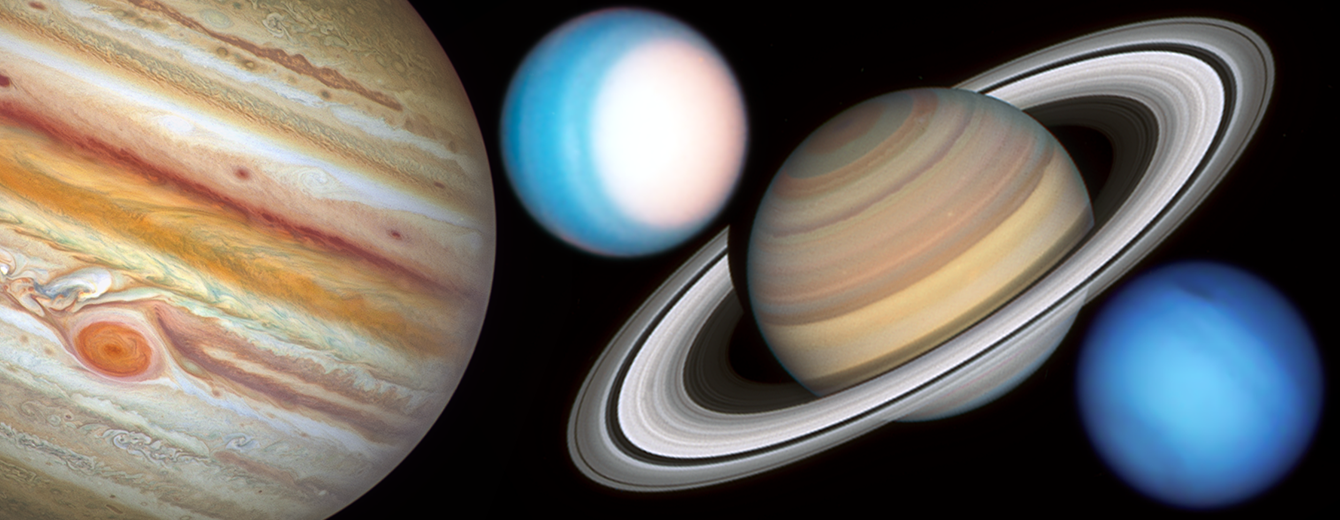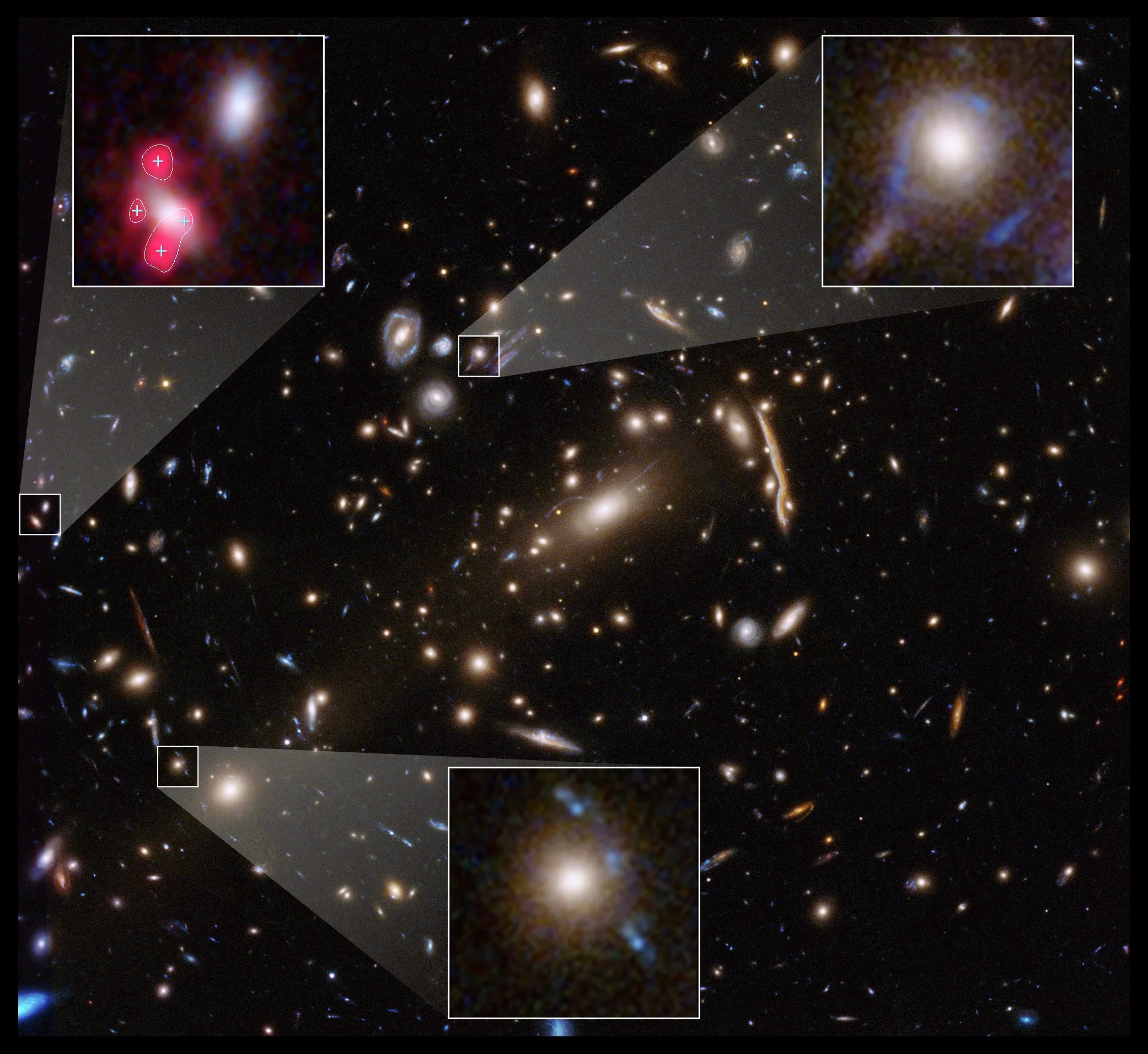More than 80% of the universe is made of stuff we have never seen. These ghostly forms of energy and matter are only detectable by the effects they have on the stuff we can see. The invisible form of matter, called dark matter, makes up roughly 30% of the universe’s total mass. Its gravity drives normal matter (gas and dust) to collect and build up into stars, galaxies, and massive galaxy clusters. Although astronomers cannot see dark matter, they can detect its influence by observing how its gravity bends and distorts light from more-distant objects, a phenomenon called gravitational lensing.

By looking at the area around massive galaxy clusters, which contain both normal and dark matter, astronomers can identify warped background galaxies gravitationally lensed by the cluster and reverse-engineer their distortions. Mathematical models of these results shed light on the location and properties of the densest concentrations of matter in the cluster, both visible (normal) and invisible (dark). The universe appears to have about five times more dark matter than regular matter, and its structure may center on an immense network of dark matter filaments that stretch between galaxies and grow over time. Areas where concentrations of these filaments intersect also hold massive visible structures like galaxy clusters.


Because these elusive filaments are so hard to find, astronomers have turned to similar forms on Earth for clues of where to look. A single-celled slime mold, called Physarum polycephalum, builds complex filamentary networks in search of food, finding near-optimal pathways to connect different locations. Astronomers using Hubble data designed a computer algorithm inspired by the slime mold’s behavior, to simulate the growth of dark matter filaments. The simulation resulted in a three-dimensional computer model of estimated locations of the cosmic web’s filamentary structure.

NASA's Goddard Space Flight Center; Lead Producer: Paul Morris
Hubble Focus: Dark Universe
Hubble Focus is a series of e-books that dive deeper into specific topics in astronomy that have been forever changed by Hubble’s explorations. "Hubble Focus: Dark Universe" is the fifth book in the series, highlighting the mission’s recent discoveries about dark matter and dark energy.
Read More and Download
Learn More

Hubble Detects Smallest Known Dark Matter Clumps
Using NASA's Hubble Space Telescope and a new observing technique, astronomers have found that dark matter forms much smaller clumps than previously known. This result confirms one of the fundamental predictions of the widely accepted "cold dark matter" theory.
Hubble Science Highlights
Discover the breadth and depth of Hubble's exciting discoveries!

Studying the Planets and Moons
Hubble’s systematic observations chart the ever-changing environments of our solar system's planets and their moons.

Tracking Evolution in the Asteroid Belt
These conglomerates of rock and ice may hold clues to the early solar system.

Uncovering Icy Objects in the Kuiper Belt
Hubble’s discoveries helped NASA plan the New Horizon spacecraft’s flyby of Pluto and beyond.

Exploring the Birth of Stars
Seeing ultraviolet, visible, and near-infrared light helps Hubble uncover the mysteries of star formation.

The Death Throes of Stars
When stars die, they throw off their outer layers, creating the clouds that birth new stars.

Finding Planetary Construction Zones
Hubble’s sensitivity uncovers the seeds of planets in enormous disks of gas and dust around stars.

Recognizing Worlds Beyond Our Sun
Hubble can detect and measure the basic organic components for life on planets orbiting other stars.

Seeing Light Echoes
Like ripples on a pond, pulses of light reverberate through cosmic clouds forming echoes of light.

Tracing the Growth of Galaxies
Hubble's Deep Field observations are instrumental in tracing the growth of galaxies.

Galaxy Details and Mergers
Galaxies evolve through gravitational interaction with their neighbors, creating a menagerie of forms.

Monster Black Holes are Everywhere
Supermassive black holes lie at the heart of nearly every galaxy.

Homing in on Cosmic Explosions
Hubble helps astronomers better understand and define some of the largest explosions in the universe.

Discovering the Runaway Universe
Our cosmos is growing, and that expansion rate is accelerating.

Focusing in on Gravitational Lenses
Gravitational lenses are 'Nature's Boost', expanding our view deeper into space and farther back in time.

Mapping the Cosmic Web
Filaments and sheets of matter create an interconnected web that forms the large-scale structure of the universe.



